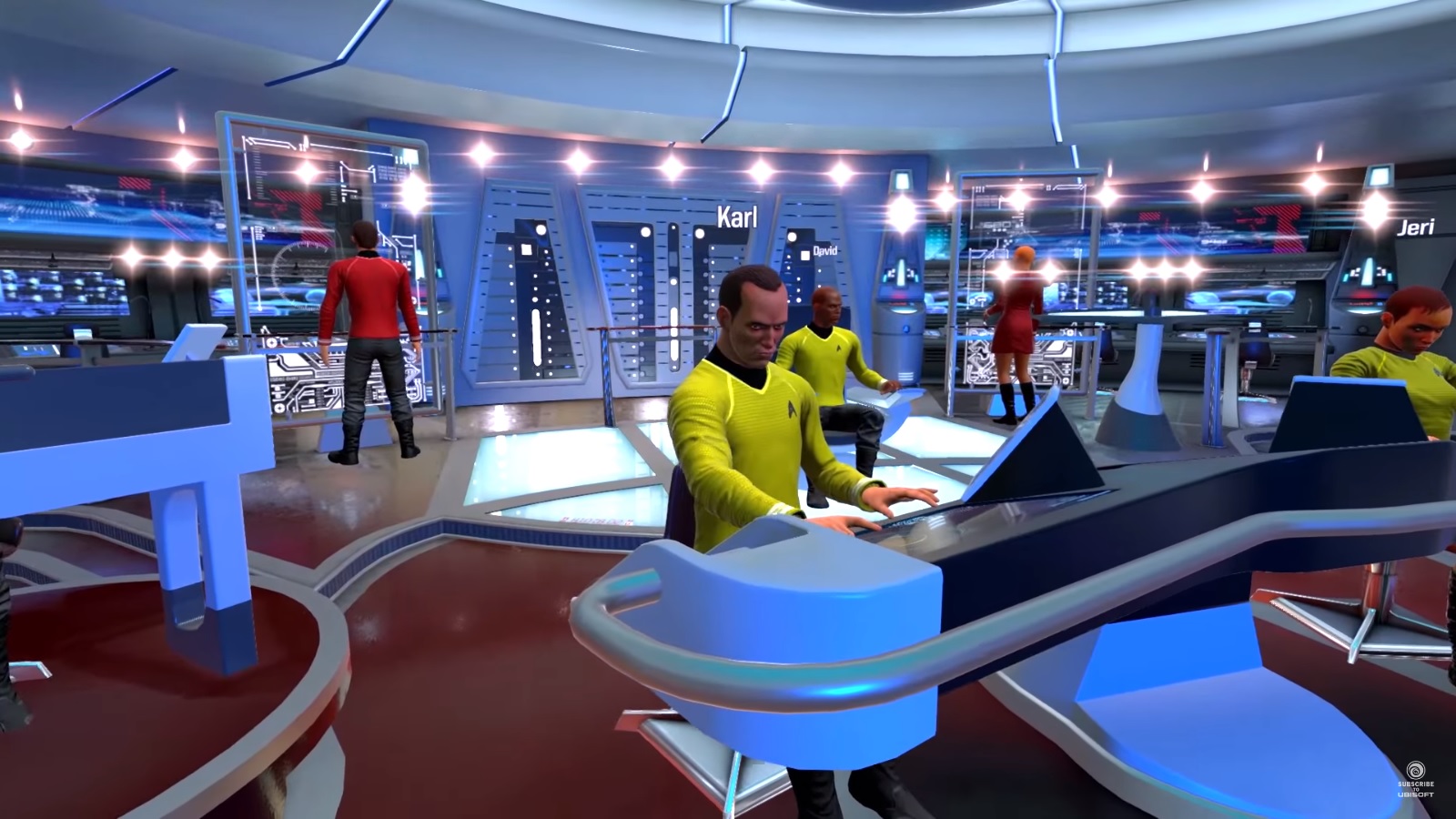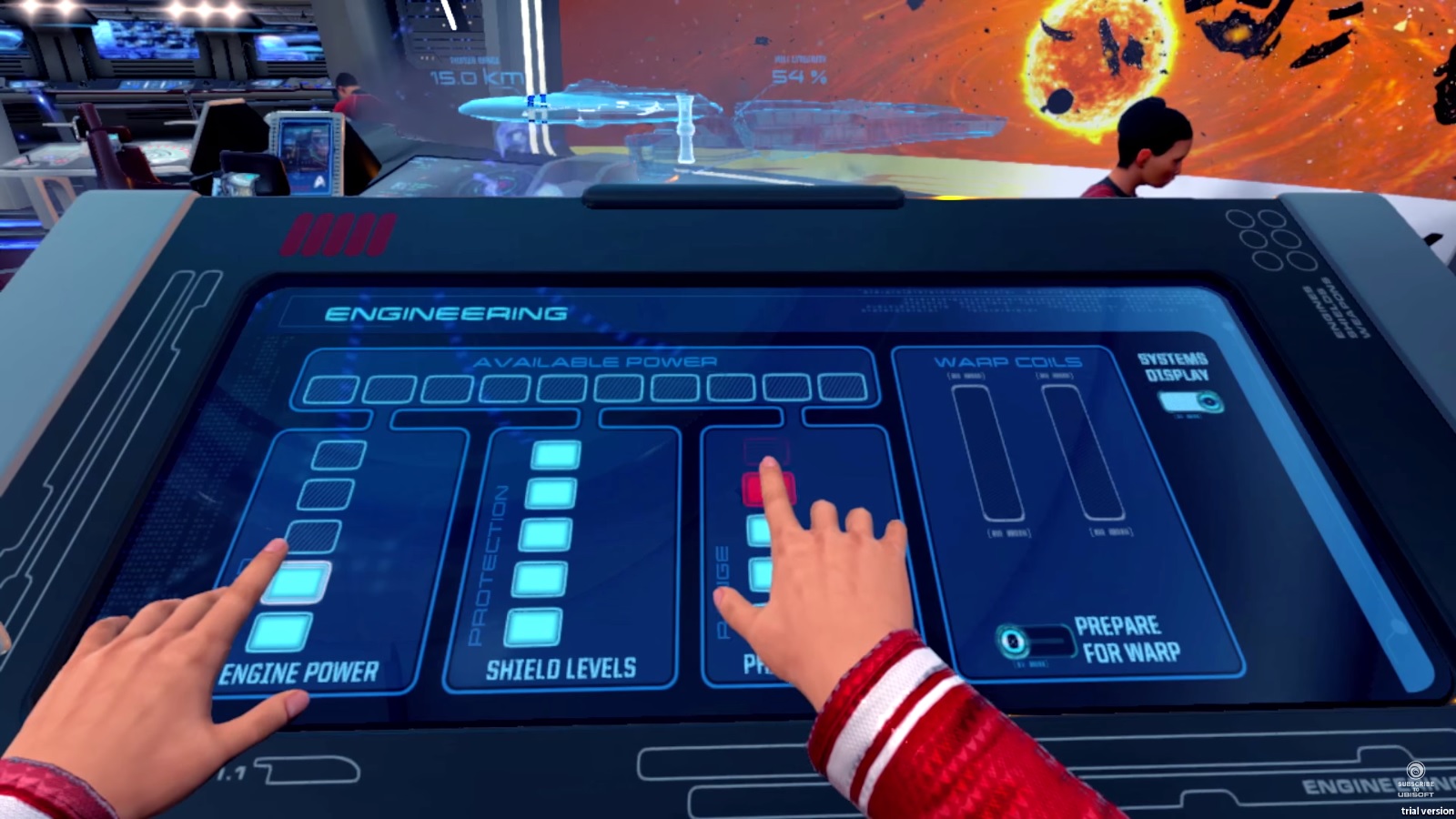Star Trek: Bridge Crew Explores Final Frontier in VR
Star Trek: Bridge Crew combines the excitement of an episode of Star Trek with the thrill of cooperative multiplayer.
LOS ANGELES — Ever since I was 11 years old, I’ve been a big Star Trek fan, and like all Star Trek fans, I’ve dreamed about serving aboard a Federation starship. Sure, I’ve played plenty of Star Trek games that approximate the fantasy, but Star Trek: Bridge Crew is the first time I’ve ever really felt like I was serving as part of a real crew. This virtual reality experience combines the excitement of an episode of Star Trek with the thrill of cooperative multiplayer, and it’s sure to please even VR-resistant Trekkies like myself.

I got to play a hands-on demo of Star Trek: Bridge Crew at E3 2016, and I really do mean “hands-on.” My crew and I used four Oculus headsets and the corresponding Touch controllers to play the game, and there are no fancy button calisthenics; you just use your hands to manipulate your bridge console, just like on the show.
MORE: Best Games to Binge Play This Summer
Since I always wondered if I’d make a good science officer, I took the most similar spot available: engineering. The game requires four players for the full experience: a captain to direct the crew, a helmsman to steer the ship, a tactician to end off enemies and an engineer (me) to manage ship systems.
My humble role may not sound like the most exciting, but rest assured, I had plenty to do once our small adventure got going. Our captain received a distress call from a nearby system, and he ordered us to go investigate. I really felt like I was on the bridge of the U.S.S. Aegis as I looked around to see my fellow players’ avatars at their stations, as well as a handful of other crewmen milling about the incredibly detailed surroundings.
While we only got to play one small mission, the final game will feature a full campaign set in the reboot universe from the J.J. Abrams films. Players can take on the campaign by themselves, but it’s hard to describe just how vital a full four-player complement is unless you try it for yourself.

Our captain barked orders; the helmsman set a course; our tactician raised shields; I prepped our warp engines. Seeing the countdown tick down on my console then watching the stars blur out of existence as we jumped to warp speed was just as magical as it sounds. When we got to the system, my job became even more vital, as I had to beam 18 survivors onto the Aegis.
The job wasn’t as easy as it sounded, as a Klingon ship soon invaded our space — followed by another one. This is where the benefit of a good captain became apparent. Our captain kept his cool and coordinated our efforts, making sure that the helm performed evasive maneuvers, tactical returned fire, and that I supplied power to our offensive and defensive systems. I also had to monitor hull integrity and continue beaming survivors out — a harrowing prospect, since transporters require temporarily dropping shields.
I was incredibly impressed that every position had something so important to do, both during combat and non-combat situations. Working together, too, felt incredibly rewarding. We weren’t gunning down hordes of enemies or tackling a giant boss; we were just pressing a series of buttons, but we pressed them intelligently, in a precise sequence, and as a result, we rescued all survivors and fended off two enemy ships.
As a lifelong fan, I don’t say this lightly, but Bridge Crew felt like being in an episode of Star Trek. Even Bridge Commander, an older Trek game with a similar premise, didn’t offer the same kind of immersion, since it was single-player and had no VR capabilities. The game will come out this fall for Oculus, Vive and PlayStation VR, and I’m already counting down the days until I can play it again.
Sign up to get the BEST of Tom's Guide direct to your inbox.
Get instant access to breaking news, the hottest reviews, great deals and helpful tips.
Marshall Honorof is a senior editor for Tom's Guide, overseeing the site's coverage of gaming hardware and software. He comes from a science writing background, having studied paleomammalogy, biological anthropology, and the history of science and technology. After hours, you can find him practicing taekwondo or doing deep dives on classic sci-fi.

